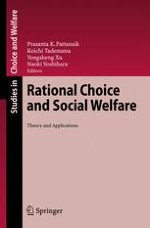This volume brings together papers, which were ?rst presented at the International Conference on Rational Choice, Individual Rights and Non-Welfaristic Normative Economics, held in honour of Kotaro Suzumura at Hitotsubashi University, Tokyo, on 11–13 March 2006, and which have subsequently gone through the usual process of review by referees. We have been helped by many individuals and institutions in organizing the conference and putting this volume together. We are grateful to the authors of this volume for contributing their papers and to the referees who reviewed the papers. We gratefully acknowledge the very generous fundings by the Ministry of Education, Culture, Sports, Science and Technology, Japan, through the grant for the 21st Century Center of Excellence (COE) Program on the Normative Evaluation and Social Choice of Contemporary Economic Systems, and by the Japan Society for the Promotion of Science, through the grant for International Scienti?c Meetings in Japan, and the unstinted effort of the staff of the COE Program at Hitotsubashi University, without which the conference in 2006 would not have been possible. We thank Dr. Martina Bihn, the Editorial Director of Springer-Verlag for economics and business, for her advice and help. Finally, we would like to mention that it has been a great pleasure and privilege for us to edit this volume, which is intended to be a tribute to Kotaro Suzumura’s - mense intellectual contributions, especially in the theory of rational choice, welfare economics, and the theory of social choice. Riverside Prasanta K.
